It seemed like something that would pass, and we optimistically isolated ourselves, adapting our routines and learning to stay home. New recipes, old TV series, doing cleanup we had put off for a long time…a lot of work.
ROUTINE
PANDEMIC DIARIES
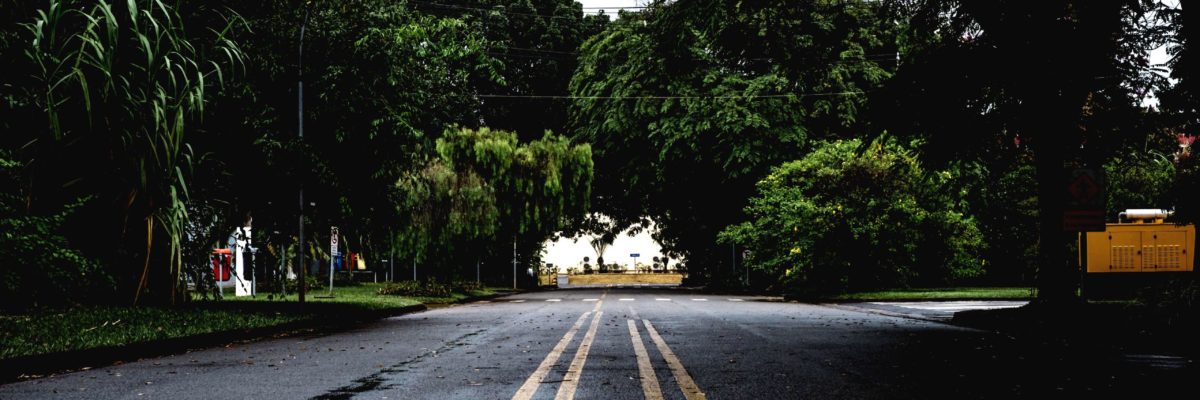
The past two years were challenging for everyone. Transformations occurred not just in the work environment, but in everyone’s lives and daily routines. Here’s what it was like for some CNPEM staff.
MAIKO CARLOS DE BARROS
Cooking, cycling, reconsidering: habits acquired during quarantine help overcome sensitive moments
In the Pilot Plant for Process Development (PPDP), an installation for scaling the technologies, activities were interrupted and silence prevailed. It was an exceedingly rare scene: this environment is known for its characteristic smells of fermentation and hydrolysis, the sound of the bridge crane, the beeping of the automated instrumentation, and the spraying sounds of the heavy machinery that operates under pressure. The PPDP fell silent, and like each one of us, experienced the effects of the pandemic.
Maiko Carlos de Barros, has been a technological development analyst in instrumentation at the PPDP since 2011, and felt the emotions of having to leave his work. “The plant stopped when lockdown began. Nobody knew what was happening because everything was so unprecedented. After a month, CNPEM established strict criteria and we began to resume some essential activities and deliveries,” he recalls. “CNPEM made it possible for staff to return safely,” he says.
Like many, Maiko found himself confined with more free time. Without the need to commute every day, he found other activities to occupy himself during these extra hours and to stem the tide of bad news that arrived from all sides, from TV to the cell phone. At home, with his wife and two children, he put his culinary skills to practice. These efforts were successful and led to some physical results, with a few extra kilograms appearing here and there. “In just a few weeks I gained two kilos,” he jokes.
“I noticed the weight gain, and going to the gym was completely out of the question,” he says. It was then that Maiko received an invitation from another PPDP colleague to go cycling. “Carlinhos [Carlos de Oliveira Filho, the PPDP coordinator] invited me to go riding and I went. We biked to neighboring towns like Pedreira and Holambra, and I realized I enjoyed it. It was an escape and exercise at the same time.” What began as unassuming trips became more than just a means of transport, and triggered what would be a paradigm shift for Maiko.
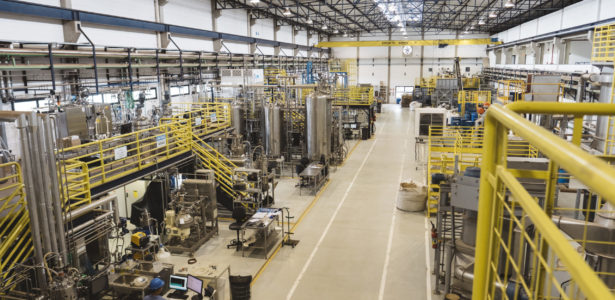
The rare silence turned to rotine at thePilot Plant for Process Development (PPDP), an installation for scaling the technologies
Embracing sustainability
Sustainability is one of the topics involved in many of the studies conducted at CNPEM. Teams dedicated to life cycle analyses and technological and ecosystem assessments simulate and calculate the impacts of the technological developments produced in the Laboratory. The pilot plant is the environment that transforms achievements made at the laboratory level into large-scale processes, and converts small-scale experiments into large volumes, bringing together the team’s expertise and sensibility to address bottlenecks and challenges related to scale. Maiko and the team of technicians, analysts, and experts at the PPDP work in synchrony over three shifts to comprise the mechanism that allows smooth, uninterrupted operation of large projects of global interest — even during a pandemic.
The projects range from developing technologies and microorganism to convert waste from agricultural industry into biofuels to using renewable raw materials to produce biomaterials (plastics and polymers, for example) and bioproducts (such as acids and solvents). The critical steps required to transform manufacturing toward a planet with more controlled greenhouse gas (GHG) emissions pass through CNPEM.
GHG emissions, by the way, fell by 7% during the pandemic. With less frequent travel, this drop was one of the most significant in history according to a study published in Nature Climate Change. For Maiko, at a certain point a return to work was imminent, and “the bicycle allowed me to practice social distancing, keep up to date on exercise, and get around quickly,” he says. “Above all, the bike was the ideal opportunity for me to incorporate the sustainability values I was already putting into practice at CNPEM,” says the analyst; since the safe resumption of activities at CNPEM in 2020, Maiko has been making his daily commute on two wheels, a total of forty kilometers per day. “And twelve kilograms lighter,” he adds with a smile.
FLORIAN MENEAU
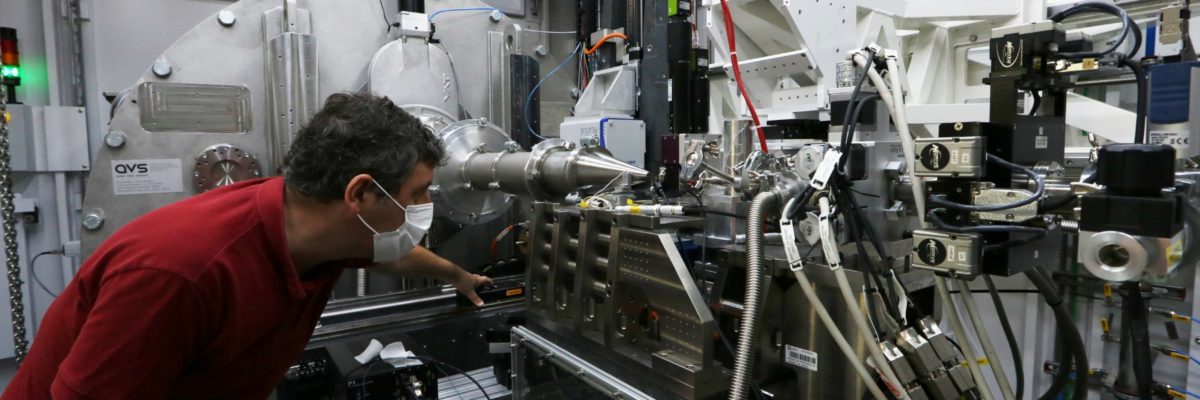
Florian leads the Cateretê research station
Big little changes
The Sirius beamlines are used to conduct experiments that allow us to observe microscopic aspects of materials, such as the atoms and molecules they are made of, their chemical states, and their spatial organization. The lines are planned to house advanced scientific instrumentation suited to solve problems in areas that are strategic for the country’s development.
One is the Cateretê beamline, which is coordinated by Florian Meneau. This experimental hutch is optimized to obtain three-dimensional images of materials with nanometric resolution, for a broad array of applications. In the biological sciences, for example, organelles within a cell can be visualized in order to investigate structural effects and cellular metabolism.
“The beginning of the pandemic coincided with the end of assembly of the Cateretê beamline. Between March and July 2021, we went to Sirius, one person at a time, to run some tests with the different equipment. From July 2021, when we received the first synchrotron light beam in the line, commissioning began with small groups taking turns to work. Obviously, communication with the other Sirius groups was more complicated, but everyone’s motivation made it possible to move forward successfully. After only a few months of intense work, we were able to carry out the first experiments with Cateretê.
On the personal front, I was overjoyed at the birth of my second daughter, Margot, which made this very unusual time much easier to deal with. She was my great change!”
RENATA ROCHA OLIVEIRA
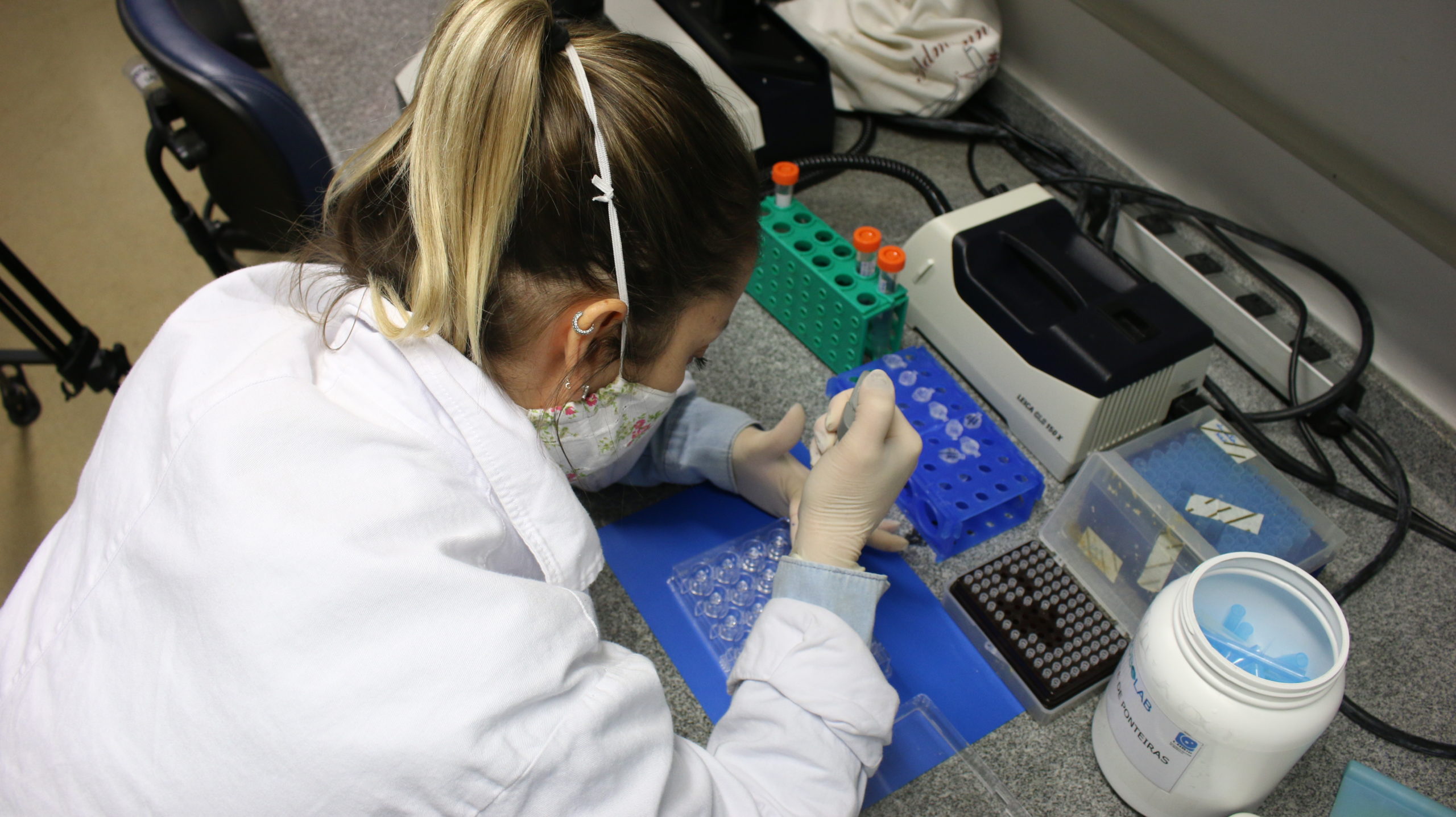
Renata worked day and night producing crystals from the SARS-CoV-2 virus, to be difracted at Manacá beamline, at Sirius
It was so intense with new challenges and knowledge that I was able to overcome the fear and missing my family and take advantage of every second of this incredible experience of being a scientist in a new world, where science played an active role.
For the production of revealing crystals
Protein crystallography helps determine the three-dimensional structure of macromolecules, and when this technique is applied to important biological targets, the resulting information is crucial for the molecular understanding, discovery, and development of new drugs. The technique is used to visualize crystals made by specialists in this area who carefully investigate new ways to produce crystals that can be precisely diffracted.
During the two years that the task force formed at the CNPEM to search for solutions to combat the SARS-CoV-2 virus was mobilized, generating the protein crystals that make up the virus was crucial to understand its mechanisms of action. Renata Rocha is one of the people responsible for this work. On several occasions, she was the first to turn on the lights in the labs at the beginning of the day and also the one to turn them off when she was the last to leave.
“Work during the pandemic was a major challenge for me. It all began precisely with CNPEM’s announcement that in-person activities were cancelled, which I could never have imagined, until the difficult decision to accept the invitation to return to in-person activities and join my colleagues on an “important task force” to address and respond to the emerging Covid-19 pandemic. The pandemic arrived at that very moment, and in the face of that scenario of uncertainty and fear it was the most challenging decision of my life. I returned, there were few of us, and that familiar routine no longer existed. We faced many challenges. Complex and tiring tasks, distancing, silent laboratories and hallways… but at the same time, it was so intense with new challenges and knowledge that I was able to overcome the fear and missing my family and take advantage of every second of this incredible experience of being a scientist in a new world, where science played an active role. There are no words to describe how great this experience was in my life and professional career, alongside researchers I had always admired and modeled myself after during all the time I’ve worked at CNPEM.”
CAROLINA PIROGINI TORRES
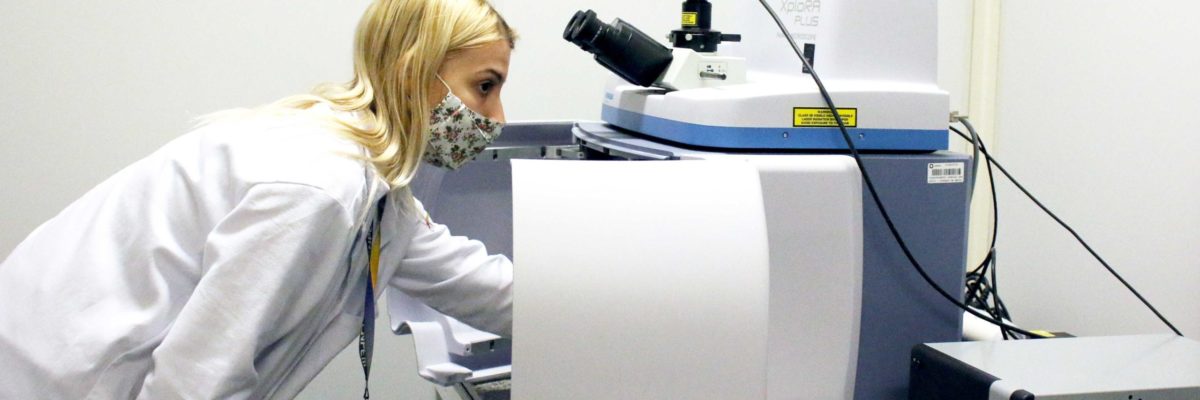
Carolina operates equipment which is also available for the use of external users through proposals submissions to LNNano
Materials characterization and self-knowledge
Carolina Torres works in the Synthesis Division of LNNano, operating equipment involved in confocal Raman spectroscopy, thermal analysis, differential scanning calorimetry (DSC), and thermogravimetry (TGA). Confocal Raman spectroscopy is a technique for characterizing material that can be used to identify aspects such as chemical functions, crystal size, polymorphic differentiation, and stacking. Thermal analysis studies are generally performed to determine a material’s properties to better understand it. These measurements normally provide information about hydration, characteristic temperatures (fusion, vitreous transition, crystallization), enthalpy of reactions, kinetic evaluations, and phase transitions, among other applications, data which are crucial for understanding and producing nanomaterials.
“Dealing with the pandemic was not at all easy. I started my work here at CNPEM in July 2020, when everything was still very new, information about Covid-19 was vague, fear was enormous, and prospects for solutions or improvements were almost zero. I did not spend any time working from home: since my first day I’ve been here in person. It was difficult and sad to see everything so empty, and to be able to meet so few people, and that was the reality for many long months. There were not many analyses to carry out, there were no discussions, and not even glassware scattered along the lab benches. Over these two years I got Covid-19 and lost one of the most important people in my life to this virus, without even being able to give her one last hug. I can say that to the same degree that I experienced emotionally awful pain, I needed to have the courage to breathe and stay strong, and that was how I discovered myself in my career and grew personally as well as professionally. I accepted challenges, I studied, I embraced important opportunities, I found myself stronger than I had never imagined I would be, I met fabulous people who made my load lighter, who are also professionals that encourage, support, and inspire me every day. I am proud to be part of such an incredible team.”
